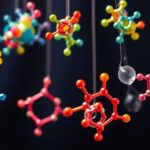Aromatic rings are special structures in organic chemistry that consist of cyclic, planar arrangements of atoms. You'll find them characterized by stable, delocalized π electrons. These rings follow Hückel's rule, needing an odd number of π electron pairs, which brings unique properties. Common examples include benzene and naphthalene. Aromatic compounds play essential roles in pharmaceuticals, perfumes, and even agricultural chemicals, showcasing their versatility. Their chemical reactions, like Electrophilic Aromatic Substitution, further highlight their importance. Stick around to discover more about their fascinating types and various applications across different industries!
Key Takeaways
- Aromatic rings are cyclic, planar structures with delocalized π electrons, known for their stability and unique chemical properties.
- They adhere to Hückel's rule, possessing 4n+2 π electrons, which classifies them as aromatic.
- Common examples of aromatic rings include benzene, naphthalene, and toluene, each featuring distinct structural characteristics.
- Aromatic compounds undergo Electrophilic Aromatic Substitution (EAS) reactions, where hydrogen is replaced by electrophiles.
- They are utilized in various industries, including pharmaceuticals, fragrances, and agriculture, due to their versatile chemical properties.
Definition and Structure

Aromatic rings are fascinating structures that play an indispensable role in organic chemistry. These unique compounds, often referred to as simple arenes, consist of a conjugated planar ring system that provides them with remarkable stability and reactivity.
To meet Hückel's rule, aromatic rings must contain an odd number of pairs of pi electrons (4n+2), ensuring their aromatic stability. You can find examples like benzene, naphthalene, and anthracene, each showcasing distinct structural features.
The planar structure of these rings is significant because it allows for effective overlap of p orbitals, facilitating the delocalization of electrons. This delocalization is what truly defines their aromatic character, making them essential in various chemical reactions and applications.
Types of Aromatic Rings

In the domain of organic chemistry, aromatic rings can be divided into three primary types: monocyclic, bicyclic, and polycyclic.
Monocyclic aromatic rings, like benzene, consist of a single ring structure with six π electrons, following Hückel's rule.
Bicyclic aromatic compounds, such as naphthalene, feature two fused aromatic rings, enhancing stability and aromatic character.
On the other hand, polycyclic aromatic hydrocarbons (PAHs) contain multiple fused benzene rings, with anthracene being a common example.
Additionally, you'll find heterocyclic aromatic rings that include one or more heteroatoms, like nitrogen or oxygen, in the ring structure.
Examples include pyridine and furan, which highlight the diversity in aromatic compounds and their various applications in chemistry and beyond.
Criteria for Aromaticity
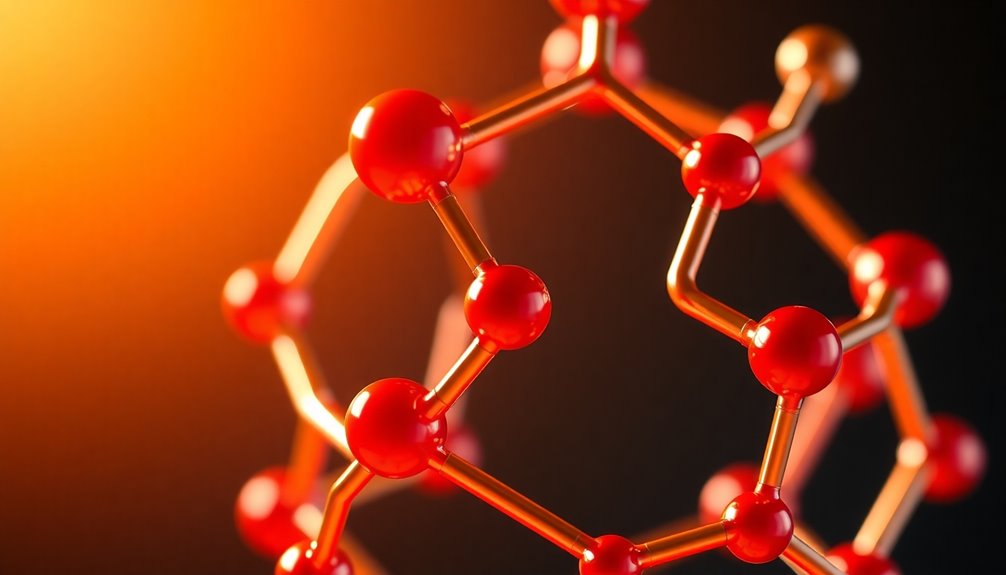
To identify if a molecule is aromatic, you need to guarantee it has a cyclic structure, allowing for continuous electron delocalization.
Also, check if it follows Hückel's rule, which states it must have 4n + 2 pi electrons for stability.
These criteria are essential for understanding the unique properties of aromatic compounds.
Cyclic Structure Requirement
While exploring the concept of aromaticity, it is essential to understand that cyclic structures play a fundamental role. Aromatic compounds must form a closed loop of atoms connected by covalent bonds. Each atom needs an occupied p orbital to allow effective conjugation of π electrons. Additionally, the entire molecule must remain planar, ensuring that the p orbitals overlap, which is critical for aromatic stability.
| Requirement | Description |
|---|---|
| Cyclic Structure | Must form a closed loop of atoms |
| Planarity | Entire molecule needs to be flat |
| π Electrons | Must follow Hückel's rule (4n + 2) |
If the π electron count equals 4n, the structure is antiaromatic and lacks stability.
Hückel's Rule Compliance
Understanding aromaticity involves more than just recognizing cyclic structures and planarity; it also hinges on the compliance with Hückel's rule. This rule states that a cyclic compound is aromatic if it contains an odd number of pairs of π electrons, following the formula 4n + 2.
For instance, benzene has 6 π electrons (n=1) and satisfies Hückel's rule, showcasing its aromatic nature. Conversely, compounds like cyclobutadiene, with 4 π electrons (n=1), are antiaromatic and unstable.
Each atom in the aromatic ring must be planar and have an occupied p orbital for effective conjugation. Significantly, lone pairs on heteroatoms can enhance the π electron count, as seen in pyridine, which also follows Hückel's rule with its 6 π electrons.
Nitrogen-Containing Aromatic Rings

Nitrogen-containing aromatic rings play an essential role in organic chemistry, exhibiting unique properties that set them apart from their carbon-only counterparts. These rings can be classified as basic or non-basic. Basic rings like pyridine lack hydrogen attachment to the nitrogen atom, allowing for easy protonation. In contrast, non-basic rings like pyrrole feature nitrogen attached to hydrogen, enhancing aromatic stability through delocalized lone pairs. Compounds like imidazole showcase the diversity of nitrogen's role in aromatic chemistry.
| Type | Example | Characteristics |
|---|---|---|
| Basic | Pyridine | Lone pair not in π system |
| Non-basic | Pyrrole | Lone pairs participate in aromaticity |
| Mixed | Imidazole | Contains both basic and non-basic N |
| Heterocyclic | Quinoline | Exhibits unique reactivity and stability |
Oxygen and Sulfur in Aromatic Rings
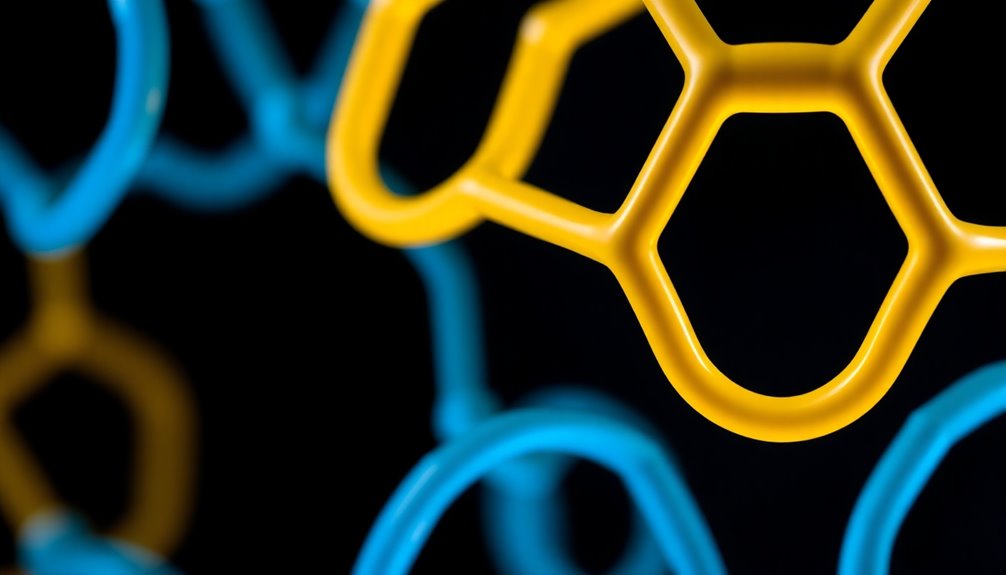
When you explore oxygen and sulfur in aromatic rings, you'll notice the presence of heteroatoms considerably impacts the compound's stability and reactivity.
These atoms contribute lone pairs to the delocalized π system, enhancing the aromatic character.
Examples like furan and thiophene highlight just how these elements can influence the overall properties of aromatic compounds.
Heteroatoms in Aromatic Rings
Heteroatoms like oxygen and sulfur play an essential role in the structure and behavior of aromatic rings, enhancing their unique properties.
In compounds like furan and thiophene, these heteroatoms contribute to aromatic character by participating in the delocalization of π electrons. In furan, the oxygen atom's lone pair engages in the aromatic system, while the second lone pair extends in the plane of the ring, bolstering stability.
This presence of heteroatoms modifies the electronic properties, influencing reactivity and the nature of substitution reactions. For instance, furan's electron-rich nature makes it reactive in electrophilic substitution, while thiophene, a versatile building block in synthetic chemistry, maintains its aromaticity, making it valuable in organic electronics.
Effects on Aromatic Stability
Oxygen and sulfur in aromatic rings considerably enhance stability by participating in the delocalization of π electrons. These heteroatoms contribute a lone pair of electrons that strengthens the aromatic character, while their second lone pair helps maintain the essential planarity of the ring.
For instance, compounds like furan and thiophene showcase aromatic behavior due to this electron delocalization. By introducing heteroatoms, you also affect the electronic properties, which can lead to different reactivity when compared to purely carbon-based aromatic compounds.
Furthermore, the presence of oxygen or sulfur can influence the polarity and solubility of the aromatic compound, ultimately impacting its interactions in various chemical reactions and biological systems. Consequently, stability is intricately linked to the presence of these heteroatoms.
Chemical Reactions of Aromatic Compounds
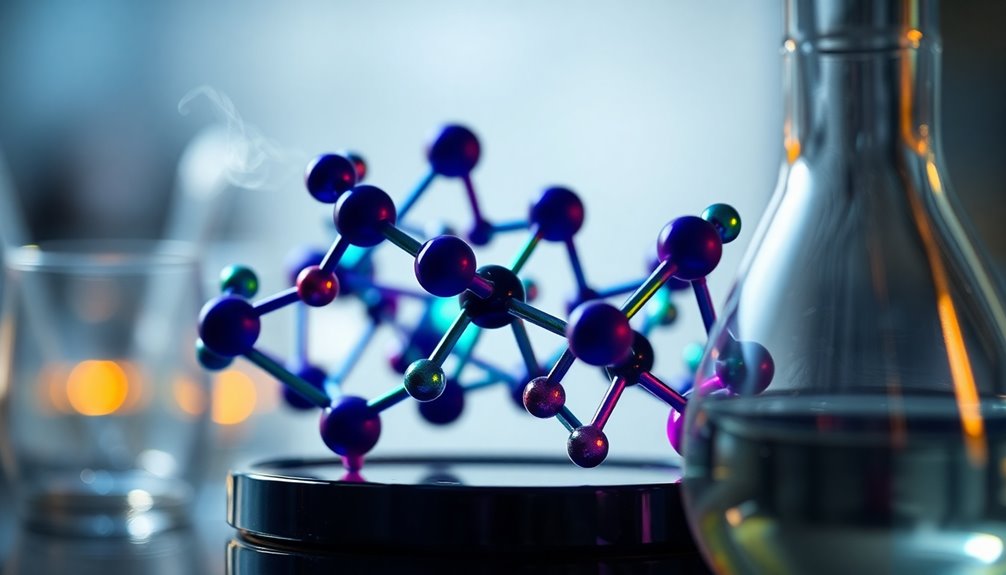
Aromatic compounds are known for their unique stability and reactivity, which primarily stems from their delocalized π-electrons.
These compounds mainly undergo chemical reactions that modify their structure and properties. Here are three key reactions:
- Electrophilic Aromatic Substitution (EAS): An electrophile replaces a hydrogen atom on the benzene ring, often with the help of catalysts like iron or aluminum chloride.
- Nucleophilic Aromatic Substitution (NAS): Strong electron-withdrawing groups allow nucleophiles to displace leaving groups, such as halides.
- Hydrogenation: Converting aromatic compounds into saturated cycloalkanes, like turning benzene into cyclohexane, usually requires catalysts like palladium or nickel.
These reactions highlight the versatility of aromatic compounds and their fascinating chemical properties in organic synthesis.
Applications and Importance
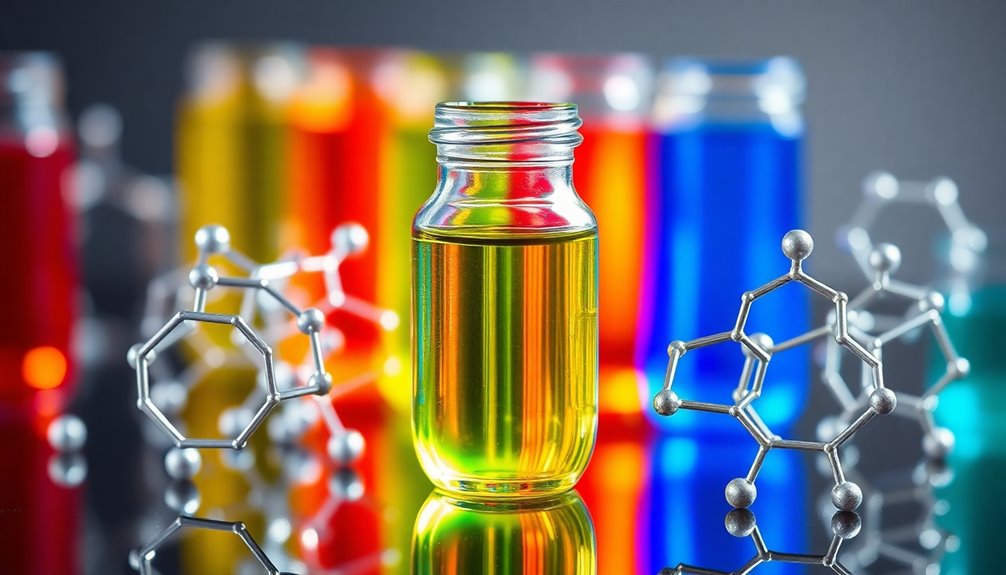
While many compounds in chemistry have their uses, few can match the significance of aromatic compounds across various industries.
Aromatic hydrocarbons, such as benzene, toluene, and xylene, are essential in numerous applications. You'll find them as solvents and precursors in industrial processes.
In the pharmaceutical sector, benzene derivatives serve as the backbone for many active ingredients and drug formulations. These organic compounds also play a critical role in producing dyes and pigments for textiles and cosmetics.
Additionally, aromatic compounds are key in synthesizing agrochemicals like herbicides and pesticides, fundamental for modern agriculture.
Finally, their pleasant odors make them indispensable in the fragrance industry, enhancing perfumes and scented products.
The presence of pi electrons in these structures contributes to their unique properties.
Frequently Asked Questions
What Defines an Aromatic Ring?
An aromatic ring is defined by its unique structure and stability.
You'll find that it must be cyclic and planar, allowing for effective overlap of p orbitals.
It should also follow Hückel's rule, which means it has an odd number of pi electrons, specifically in the form of 4n+2.
If it doesn't meet these criteria, like being non-planar or having an even number of pi electrons, it's classified as non-aromatic or antiaromatic.
What Are the Aromatic Rings in DNA?
In DNA, the aromatic rings are found in the nitrogenous bases: adenine, thymine, cytosine, and guanine.
These rings play a crucial role in stabilizing the DNA structure. You'll notice that adenine and guanine contain two fused rings, while thymine and cytosine have one.
The delocalized π electrons in these rings allow for hydrogen bonding and stacking interactions, which are essential for proper base pairing during DNA replication and transcription.
Are Aromatic Rings and Benzene the Same?
Think of benzene as the star player in a team of aromatic rings.
While benzene is indeed an aromatic ring, not all aromatic rings are benzene. Benzene is a simple six-carbon structure, but aromatic rings can also include more complex forms with different atoms.
They all share aromaticity, but their structures and properties can vary. So, while they're related, they're not interchangeable.
You've got a whole league of aromatic compounds out there!
What Is Aromatic Ring and Non-Aromatic Ring?
An aromatic ring features a cyclic structure with delocalized π electrons, following Hückel's rule for stability.
In contrast, a non-aromatic ring lacks these characteristics, often falling short in electron delocalization or planar structure. This results in lower stability and different chemical properties.
Understanding the difference between these rings is crucial, as it impacts how compounds react and behave in various chemical reactions, influencing their applications in organic chemistry.
Conclusion
In conclusion, aromatic rings are like the heartbeat of organic chemistry, pulsating with unique properties and applications. Their distinctive structure and behavior make them essential in various fields, from pharmaceuticals to materials science. Understanding aromaticity and the role of nitrogen, oxygen, and sulfur in these rings opens up a world of possibilities. So, whether you're a student or a professional, embracing these compounds can spark creativity and innovation in your work. Immerse yourself and explore!






